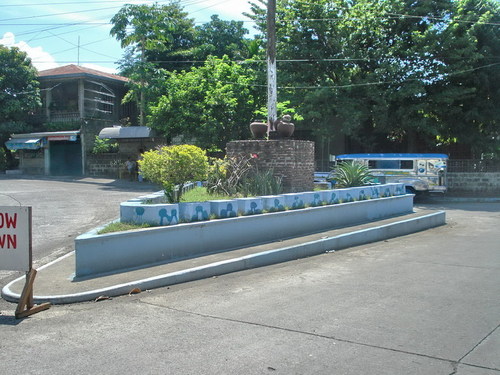Socio-Economic Profile
March 26, 2009
The
municipality of Piddig is a component unit of the Province of Ilocos
Norte. It is the eleventh town organized in the province by the
Spaniards in 1770 under the patronage of St. Anne. It was originally
named PIDIPID by the early settlers owning perhaps to its clustered
hills and rolling terrains. When the indigenous “ITNEGS” were
inter-mixed with migrants from the neighboring towns and provinces,
they eventually called the community “PIDDIG” which name is carried up
to contemporary times.
Piddig is known to history for at least three (3) major reasons:
i. The BASI REVOLT of September 16, 1897 when the Piddiguenos rose in arms to protest the imposed Spanish Monopoly in the manufacture of the BASI, a local red wine made from fine sugar canes;
ii. By giving birth to the world renown 15th Infantry USAFIL-NL, the all Filipino military contingent that liberated the provinces of Ilocos Norte, Ilocos Sur, Abra and the Mountain Province from Japanese occupation during World War II; and
iii. By producing such noted some with the likes of:
· Don Claro Caluya, the acclaimed Prince of Ilocano Poets who immortalized the songs like BANNATIRAN, and other equally time enduring ballads, and translated to Ilocano the now famous Jose Rizal’s LAST FAREWELL;
· Teofilo Ildefonso, a bronze prize swimmer in the Amsterdam Olympics;
· Honorable Guillermo Flores, who was a poet in his own right; and many other sons and daughters who each weree able to carve a name not only for themselves but for the municipality, as well.
Piddig seemed to be a well from which talents never ran out. An outstanding zarzuela writer was the late Don Pascual Agcaoili Guerrero. In the field of music, the town has produced two outstanding pianists, Professor Saturnino Foronda and Professor Luis Castueras. In the field of medicine, Dr. Florencio Yuzon has found his place in the sun as a successful medical doctor in Ohio, and also made giving a nobler name by his philanthropic spirit thru scholarships channeled to the Roosevelt High School.
Piddig
is about 17.5 kilometers east of Laoag City or about 235 kilometers
from San Fernando, La Union, the regional growth center of the north
and approximately 507 kilometers from manila, the seat of the National
Government.
The municipality has twenty three component
barangays each administered by a local sanggunian. Of the 23, there are
three urban barangays composing the Poblacion namely Cabaroan, Anao and
Loing, with an aggregate land area of 136.67 hectares or 76% of the
total land area of the municipality. Incidentally, the seat of the
local government unit is located at Poblacion Anao which is nestled on
top of the Capitol Hill of about 100 meters above sea level
Ilocano is the predominant dialect spoken in the community, although a
majority of the inhabitants speak English as a second language along
with the national language which is Pilipino.
The annual grown rate in the community is 1.13% to 1.21% and the
population density is 81 persons per hectare and 80% of the population
live in the rural barangays.
The Municipality has a very high literacy rate of about 98% with the
male dominating the population by 1.72%. It is basically agriculture,
the about 6.4 hectares of arable land is planted with rice, corn,
Virginia tobacco, garlic, sugarcane and other cash crops.
It has 17 public elementary school centers. There are also two private
high schools namely Roosevelt High School and St. Anne Academy and one
public High School, the Salustiano L. Aquino Memorial National High
School, which is located in Tonoton.
It has also a community hospital with basic equipment and facilities, a
rural health outreach network under the Municipal Health Office, five
functioning Barangay Health Centers, at least three government
physicians, four nurses, about ten midwives and a dozen of comadronas
who are on call anytime of the day.
The potential resources of the municipality which has yet to be exploited are mining and tourism.
Posted by NG.